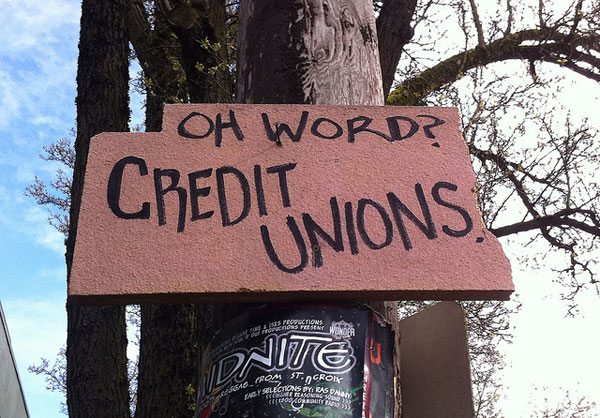
April 26, 2018; Next City
In community economic development, credit unions are a bit of a sleeping giant. But, as Emily Nonko shows in an article in Next City about San Antonio, credit unions can be important contributors to economic development in low-income neighborhoods.
The credit union movement may not always be highly visible, but it is large. At present, 114.5 million Americans are member-owners of these cooperative financial institutions. Total credit union assets total $1.428 trillion. (That, by the way, is up $175 billion from the assets they had just two years ago. Membership has also increased by nine million people over the same period.)
So, you might think that you would hear about credit unions leading community economic development all the time. But they are often conservative in their lending patterns. Part of the reason for this is that there has been a federal cap of 12.25 percent of assets that has restricted business lending by credit unions since 1998. There is an exception to this cap, however, for credit unions that become federally certified as community development financial institutions or CDFIs. In San Antonio, Select Federal Credit Union was chartered in 1939 to serve railroad employees; that is, it was founded 55 years before legislation creating federally certified CDFIs was passed. Of course, over time its field of membership expanded to be open to all Eastside residents.
Years ago, the credit union chose to become a CDFI “to better serve low- and moderate-income families,” says John Garcia, who handles business development at the credit union. The designation also frees up the credit union to engage in more business lending, as well as the obligation to focus its efforts on improving bank access for residents of modest means.
Sign up for our free newsletters
Subscribe to NPQ's newsletters to have our top stories delivered directly to your inbox.
By signing up, you agree to our privacy policy and terms of use, and to receive messages from NPQ and our partners.
The Eastside, Nonko notes, is a historically important neighborhood in San Antonio. “The Eastside was first settled by freed slaves during Reconstruction,” Nonko explains. “It was one of the few areas where San Antonio’s African American residents could buy a home, and they faced harsh segregation reinforced by the arrival of the railroad, whose right-of-way further solidified the division between the Eastside and other parts of the city (a pattern reinforced yet again when interstate highways eventually carved their way across the city).”
In 2014, President Barack Obama designated the Eastside as one of the first five “Promise Zones,” which sought to promote “holistic community-based approaches.” Nonko notes that, “At the time of the Promise Zone designation, the Eastside had a 35.2 percent poverty rate and an unemployment rate over 11 percent.” The credit union lies outside the boundaries of the Eastside Promise Zone, but part of the community rebuilding strategy has centered on attracting credit union lending to the neighborhood.
“Thirty percent of residents in the Eastside are considered not bankable,” says Dr. Mike Etienne, who directs the Promise Zone initiative for the city. High-interest payday lenders are a major challenge. Renovations completed to the credit union in November 2017 seek to make the credit union more accessible to Eastside residents. For example, a community meeting room was added, which, Nonko writes, “is now used by local nonprofits for meetings and meet-and-greets.” The credit union, Nonko adds, has also “spearheaded outreach with neighborhood associations and opened a mini-branch in the nearby Ella Austin Community Center.”
This year, Nonko notes, a second credit union, Credit Human has chosen to “move its headquarters into the Eastside Promise Zone proper, renovating a previously abandoned structure into a 10-story LEED-certified building that will house 435 employees.” The addition of a second credit union to the community is welcome, Etienne says. The impact of the investments by both Select Federal Credit Union and Credit Human are making federally insured checking and savings accounts much more accessible in San Antonio’s Eastside.
“The perception of the Promise Zone being a high-poverty, unbankable community is changing,” Etienne observes.—Steve Dubb













